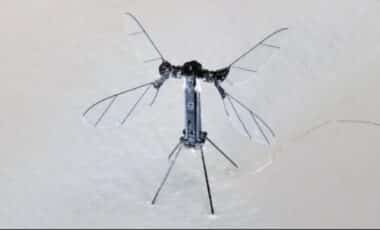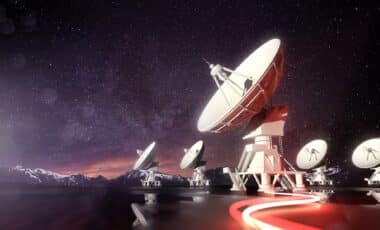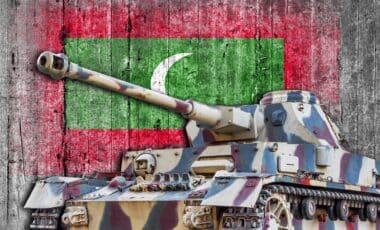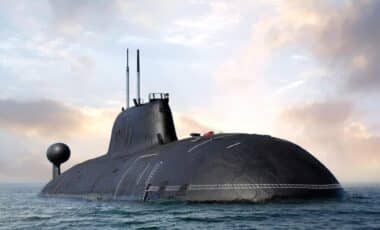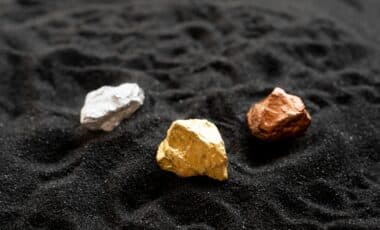Battleship Roma (‘Corazzata Roma’) was the fourth Vittorio Veneto-class battleship of Italy’s Regia Marina (Royal Navy). As Roma was laid down almost four years after the first two ships of the class (Impero and Vittorio Veneto), some improvements were made to the design, which included an additional freeboard being added to the bow.
Roma was commissioned on 14 June 1942, but a severe fuel shortage in Italy at that time prevented her from being deployed; instead, along with her sister ships Vittorio Veneto and Littorio, she was used to bolster the anti-aircraft defenses of various Italian cities. During this time she was severely damaged twice in June 1943 from bomber raids on La Spezia. After repairs in Genoa through all of July and part of August, Roma was deployed as the flagship of Admiral Carlo Bergamini in a large battle group that eventually was comprised of three battleships: the Roma, the Vittorio Veneto and Littorio (renamed Italia after July 25, 1943), three cruisers (Eugenio di Savoia, Montecuccoli and Regolo) and eight destroyers (Legionario, Grecale, Oriani, Velite, Mitragliere, Fuciliere, Artigliere and Carabiniere). Their stated intent was attacking the Allied ships approaching Salerno to invade Italy (Operation “Avalanche”) but, in reality, the Italian fleet was sailing to Malta to surrender following Italy’s September 8, 1943 armistice with the Allies.

The Cadillac of Italy’s Navy during World War II: Corazzata Roma

The Cadillac of Italy’s Navy during World War II: Corazzata Roma
German intelligence got wind of what was happening and would send planes in the air to stop it from happening. Allied air cover, which was apparently promised to the Italians, never showed up.
While the force was in the Strait of Bonifacio, they were spotted by German reconnaissance around 1400 hrs on 9 September 1943. Two Dornier Do 217s of the German Luftwaffe’s unit Kampfgruppe 100 — armed with Fritz X radio-controlled bombs— took off from Istres (Marsiglia) and sighted the force around 1530 hrs. The first bomb was directed to Italia (ex-Littorio) but did little damage. At 1545 hrs the Roma was hit on the right side resulting in the loss of the ship’s speed which was reduced to 10 knots.

The Cadillac of Italy’s Navy during World War II: Corazzata Roma
At 1550 hrs the Roma was struck again by a second bomb. This one exploded in the forward deposits of the big caliber complexes. A column of flames and smoke rose for a thousand meters. The turret n. 2 (1.500 tons) along with all of its occupants and the command tower were projected aloft and tilted to the right side. The ship began to tilt to the right side. It was a horrendous show of death and destruction. The majority of the men were burned alive.
At 1612 hrs the Roma capsized, broke into two, and sank carrying 2 Admirals, 86 Officers and 1264 sailors down with her.
Discovery of Battleship Roma

Battleship Roma
The sunken vessel was found in June 2012 by the underwater robot ‘Pluto Palla’, designed by Italian engineer Guido Gay. It was discovered about 30 km (19 mi) off the northern coast of Sardinia at a depth of around 1,000 m (3,281 ft). On 10 September 2012 a memorial ceremony was held on an Italian frigate over the spot where Roma went down. Giampaolo Di Paola, himself a former naval officer and at the time defence minister, at the ceremony described the dead sailors as “unwitting heroes who found their place in history because they carried out their duty right until the end”
She was identified after images have unequivocally shown consistency between the anti-aircraft guns of the wreck and those that were embarked onboard the battleship “Roma”. This is the official conclusion that the Italian Navy has drawn from the photographic evidence shown at the press conference held in the morning at the departmental library of the Officers’ Club in La Maddalena (an island off the coast of Sardinia), in the presence of all those who were involved in the tracking and the official identification of the wreck of the warship sunk 69 years ago and “photographed” for the first time on June 17th, 2012.
SEE MORE: Seldom interior of images of Battleship Roma (Page 1 contains Engine / Boiler Rooms) or Seldom exterior images of Battleship Roma (Contains images of its Deck Guns, Turrets, Commander and Stern Catapult)
Sources used: Wikipedia, Regia Marina – Marina Militare, Times of Malta. Images: Marina Militare.
Interesting links: Corazzata Roma (Dati Tecnici), La Marina Italiana nella Seconda Guerra Mondiale (Italian Navy in World War 2) and YouTube video of Corazzata Roma’s discovery.


